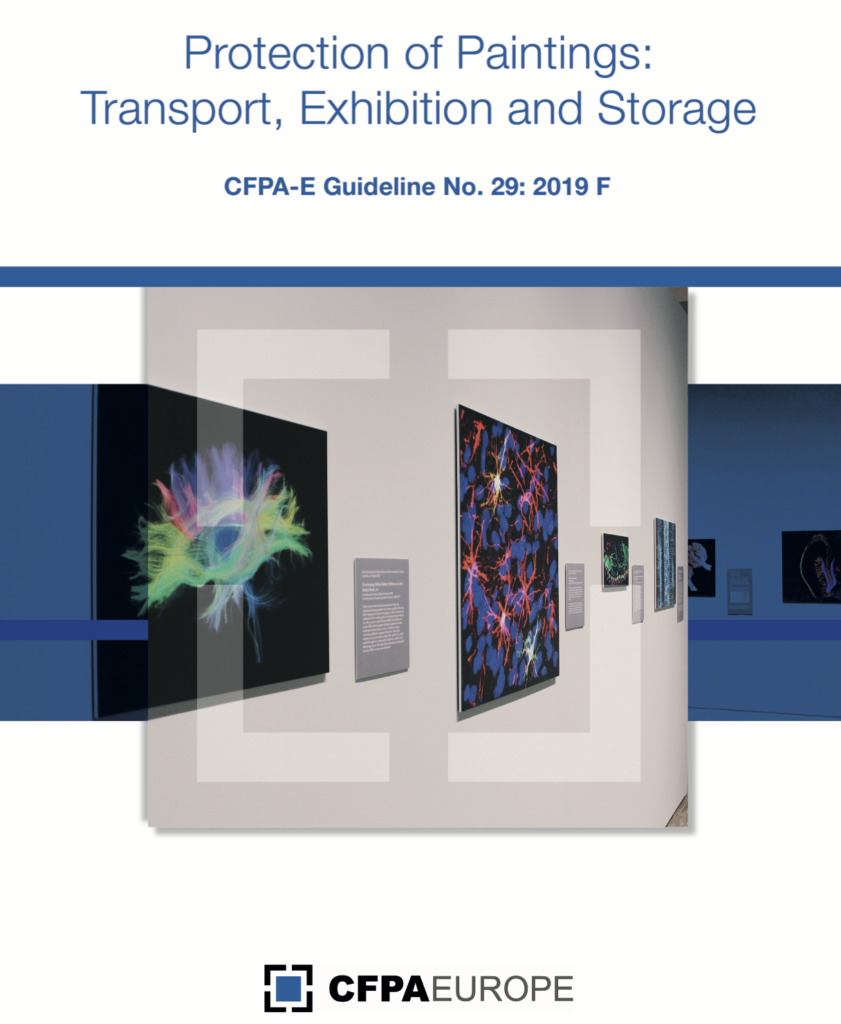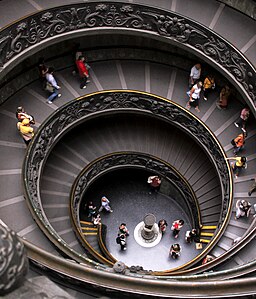Safety in Transport of Works of Arts
Transporting works of art can expose them to risk of damage, as happened to Leonardo da Vinci’s painting Mona Lisa. Transporting works of art can expose them to risk of damage, as happened to Leonardo da Vinci’s painting Mona Lisa. Therefore, learning more about the measures to be implemented can be useful in knowing what measures need to be taken into consideration when moving these very special goods In this regard, we can refer to three documents, published between 1978 and 2019, in which we find the legal framework (UNESCO, 1978), while the other two (Washington National Gallery of Art, 1991-1997 and the CFPA Guideline, 2019) provide information on the protection and transport of works of art, but focusing on different aspects.
- Resolutions of the UNESCO 1978 General Conference. This document is a report of the UNESCO General Conference of 1978. It contains resolutions and recommendations regarding various aspects of education, science, culture and communication, including the protection of cultural heritage. It is important to note, however, that the international legal framework is constantly evolving. New instruments and agreements can be developed to address emerging challenges in the field of cultural heritage protection.
- Washington National Gallery of Arts’s “Art in Transit Handbook for Packing and Transporting Painting“. This handbook provides practical guidance on packing and transporting paintings. It covers risk assessment, temperature and relative humidity protection, shock and vibration protection, design of packing crates, and the role of the carrier.
- CFPA Guideline on Protection of Paintings: Transport, Exhibition and Storage. This guideline focuses on fire safety in museums and storage spaces for works of art. Discusses fire detection and extinguishing systems, highlighting the importance of choosing systems that protect works of art from damage caused by fire extinguishing agents.
Together, these documents provide comprehensive guidance for protecting works of art, from general policy development to implementing specific fire safety and transportation measures.
General protection of artworks transport: the Art in Transit Handbook
Focusing on technical issues, the document published by the Washington National Gallery of Art “Art in Transit: Handbook for Packing and Transporting Paintings,” edited by Mervin Richard, Marion F. Mecklenburg, and Ross M. Merrill is intended to be a practical guide for anyone involved in packing and shipping paintings. It represents a synthesis of theoretical research on the subject and the experience of conservators, packers, and shippers.
The Handbook covers a wide range of topics, including risk assessment, climatic conditions during transport, protection from temperature and relative humidity, protection from shock and vibration, design of packing cases, and the role of the carrier.
An important feature of the text is the fact that it translates theoretical studies and scientific information into practical and accessible language, providing detailed procedures for the safe packaging and transportation of paintings.
The handbook emphasizes that no “high-tech” packaging method can guarantee the absence of damage. Damage occurs when paintings that are too fragile to loan are included in traveling exhibitions. A proper selection procedure should identify the weaknesses of the painting and assess the risks posed by a loan. Also the role of the curator is emphasised: such person, together with the conservator, has a fundamental role in the decision-making process regarding the loan of an artwork. The protection of the painting during the loan should be the primary concern.
A more specific role concerned the importance of the frame. It should be considered an integral part of the painting, as its primary role is to protect the painting. If the frame cannot perform this function and travel safely, a “travel frame” should be considered. More over, the manual provides detailed guidance on designing packaging that will protect works of art from shock and vibration during transportation. Several procedures are described for calculating the shock protection provided by a packing crate.
Another crucial aspect emphasized by the manual is the importance of using chemically stable packaging materials to avoid damage to works of art. Some materials, such as wood, non-collagenous proteins, and nitrocellulose, can release harmful chemicals.
Fire protection of paintings transport: the CFPA Guide
The CFPA Guideline on Protection of Paintings (Guide No. 29:2019) covers specifically fire safety measures specifically applied to protecting paintings during transport, display and storage. The Guide also provides advice on organising an emergency, recovering artworks after a fire and preventing damage during transport. It is primarily aimed at museum curators or safety officers. However, it is also aimed at rescue services, consultants, security companies and other professionals who can help improve fire safety levels in museums.
The transport of works of art is carried out, for the most important objects, by particularly expert operators. In general, however, any transport of artefacts of historical or artistic value deserves adequate attention. This also applies to fire protection. For this specific topic, two main aspects to consider are active and passive protection. With regard to active fire protection measures, the Guide suggests evaluating the appropriateness of the following specific measures:
- Fire Detection: It is advisable to use at least two fire detectors inside the vehicle, positioned on the ceiling to cover both the front and the rear. These detection systems can be particularly useful for fires that develop inside the vehicle due to mechanical or electrical failures.
- Fire Extinguishing: Vehicles should be equipped with fixed fire extinguishing systems. The choice of extinguishing agent must be made carefully, considering the specific characteristics of the works of art transported and of the vehicle itself.
- Gas suppression systems may not be effective if the vehicle is not sufficiently sealed. A Door Fan Test can help assess the suitability of such systems.
- Alternatives such as dry powder extinguishers or water mist systems could be considered, bearing in mind that these agents can also have undesirable effects on works of art. Annex 2 of the guideline describes the advantages and disadvantages of different fire extinguishing systems.
As regards passive measures, the main interest concerns packaging, for which the following characteristics must be taken into consideration:
- Conventional wooden packaging does not offer adequate protection against climatic variations or fires. It is important to distinguish between “fireproof” and “thermal insulation”.
- A fireproof material delays the point of ignition.
- Thermal insulation prevents the transmission of heat. It is essential to use thermally insulated packaging to protect works of art from high temperatures in the event of a fire.
- The ideal packaging characteristics are:
- Fire resistance: The packaging must maintain its structural integrity at high temperatures for a certain period.
- Thermal insulation: The internal temperature of the packaging must not exceed a certain value when exposed to high temperatures for a certain period. Specifically, the temperature should not exceed 80°C, as at higher temperatures the paint layer softens and becomes unstable. Irreversible damage can occur from 140°C.
- Waterproof: The packaging must resist water, whether splashed or completely submerged.
- Climatic stability: The inside of the packaging must not show significant variations when exposed to external climatic conditions for a period of 12 hours.
In addition to the features mentioned, considering that means of transport can be considered “mobile storage”, it is essential to apply the same fire safety rules as those provided for museums, taking into account the specific risks associated with the mobile nature of transport. It is essential to draw up a “worst-case” scenario to evaluate and implement the most appropriate security measures.
Damage Control Plan
Among the protection and prevention measures, the damage control plan must be considered. A damage control plan includes several actions to minimise the impact of an emergency and protect the institution’s assets. Specifically, the objectives of such a plan are to:
- Minimise the impact of the emergency by limiting the spread of smoke and heat.
- Reduce the loss of the assets by moving important works to a safe place.
- Recover important documents.
- Minimize the impact of the firefighting process by reducing collateral damage caused by water.
The activities to be carried out in a damage control plan should consider:
- Call the fire brigade.
- Evacuate non-essential personnel.
- Take first steps against the fire.
- Provide technical assistance to the fire brigade upon their arrival.
- Take the necessary measures to prevent the fire from spreading (cutting off electricity, closing doors and windows, working on the ventilation system, etc.).
- Limit the impact of extinguishing agents (mainly water).
- Disperse smoke.
- Retrieve items and artworks after the fire has been extinguished.
There are several steps to organizing a damage control plan:
- Determine the equipment needed based on the size of the museum.
- Complete the identification and inventory process to establish relocation priority.
- Establish a detailed damage control plan and reserve lists.
- Establish temporary storage space for relocated artworks.
- Train and practice teams.
- Appoint support staff to assist in relocating artworks.
- Fire drills/emergency drills involving all staff and firefighters.
Ultimately, the general measures to be adopted in the case of transport do not differ in basic principles from those that characterise buildings and fixed installations, but particular importance must be given to the management of the entire process and the training of the personnel involved.






